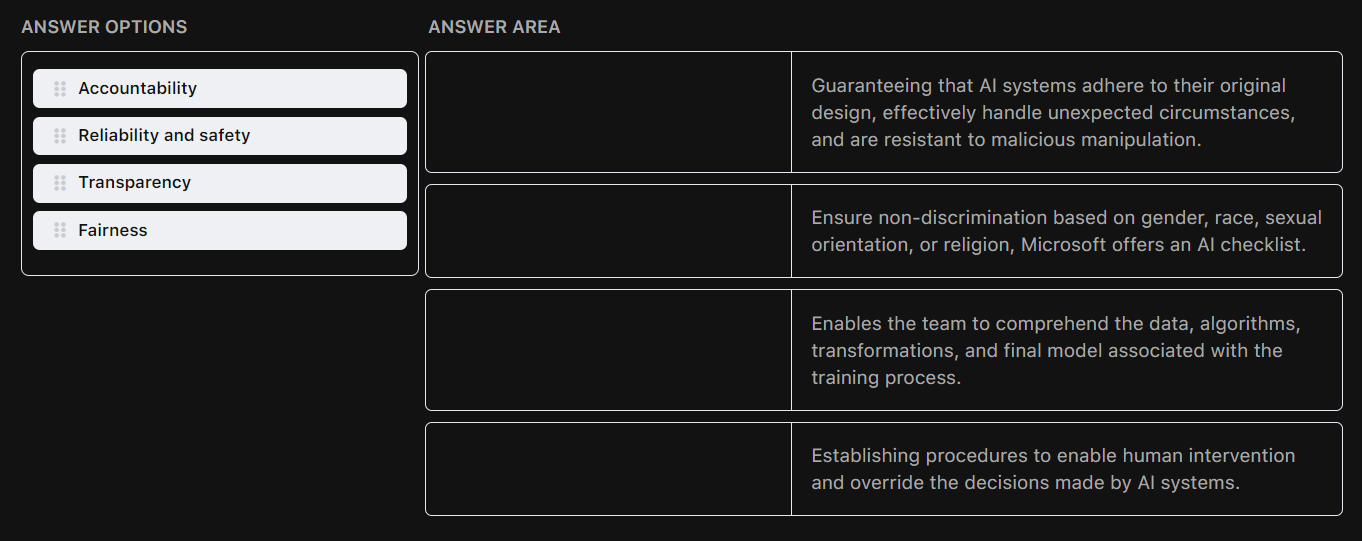Last updated on June 24, 2024
Here are 10 AI-900 Microsoft Azure AI Fundamentals practice exam questions to help you gauge your readiness for the actual exam.
Question 1
Match the relevant Microsoft guiding principles for responsible AI with their appropriate descriptions.
Instructions: To answer, drag the appropriate item from the column on the left to its description on the right. Each correct match is worth one point.
Question 2
What guiding principle ensures that consumers have control over their data and safeguards their privacy and security in AI systems?
- Transparency
- Reliability and Safety
- Privacy and Security
- Accountability
Question 3
Question 4
Which responsible AI principle aligns with the solution of using Snapshots within Azure Machine Learning workspaces to record or retrain training-related assets and metrics, thus promoting transparency?
- Reliability and safety
- Accountability
- Inclusiveness
- Transparency
Question 5
Match the types of AI workloads to the appropriate scenarios.
To answer, drag the appropriate workload type from the column on the left to its scenario on the right.
Question 6
Which specific workload type within AutoML is typically employed in the development process of chatbots that possess the capability to automatically respond to inquiries pertaining to refunds and exchanges?
- Classification
- Regression
- Natural language processing (NLP)
- Computer vision
Question 7
You are tasked with developing a predictive model for a multi-location retail business to generate accurate forecasts for future sales, taking into account the historical sales data from each store and the unique seasonal patterns at each location.
In this scenario, which AutoML workload type would you select to build a predictive model that effectively incorporates both the historical sales data and the seasonal variations?
- Classification
- Regression
- Time-series forecasting
- Computer vision
Question 8
Match the types of AI workloads to the appropriate scenarios.
To answer, drag the appropriate workload type from the column on the left to its scenario on the right.
Question 9
You are assigned to develop an ML solution that can accept natural language input and generate original content. The solution should return appropriate responses in a variety of formats, such as in the form of an image, a code or an easy-to-understand natural language response.
Which of the following should you use to meet the above requirements?
- Generative AI
- Predictive AI
- Time-series forecasting
- Natural language processing (NLP)
Question 10
Which responsible AI principle aligns with the solution of implementing algorithmic techniques such as demographic parity or equalized odds to ensure that an AI system does not discriminate based on gender, race, sexual orientation, or religion?
- Reliability and safety
- Accountability
- Inclusiveness
- Fairness
For more practice questions like these and to further prepare you for the actual AI-900 Microsoft Azure AI Fundamentals exam, we recommend that you take our top-notch AI-900 Microsoft Azure AI Fundamentals Practice Exams, which simulate the real unique question types in the AI-900 exam such as drag and drop, dropdown, and hotspot.



























